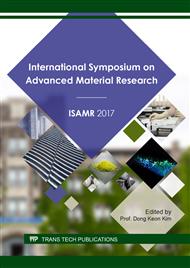p.183
p.188
p.194
p.200
p.206
p.211
p.218
p.222
p.231
Acoustic Emission in Stainless Steel End Milling with Carbide Tools
Abstract:
Tool wear is a complex phenomenon, it worsens surface quality, increases power consumption, and causes rejection of machined parts. Tool wear has a direct effect on the quality of the surface finish of the workpiece, dimensional precision and ultimately the cost of the parts produced. In modern automated manufacturing machines, tool monitoring system for automated machines should be capable of operating on-line and interpret the working condition of machining process at a given point in time. Therefore, there is a need to develop a continuous tool monitoring systems that would notify operator the state of tool in order to avoid tool failure or undesirable circumstances. This study therefore uses acoustic emission (AE) sensing techniques, signal processing and Artificial Neural Networks (ANN) frameworks to model and validate the machining process. The AE showed effects of tool breakage and ANN predictions closest to the experimental cutting parameters were obtained. It was also shown that the ANN prediction model obtained is a useful, reliable and quite effective tool for modeling tool wear of carbide tools when working on stainless steel. Thus, the results of the present research can be successfully applied in the manufacturing industry to reduce the time, energy and high experimental costs.
Info:
Periodical:
Pages:
206-210
Citation:
Online since:
August 2017
Price:
Сopyright:
© 2017 Trans Tech Publications Ltd. All Rights Reserved
Share:
Citation:


